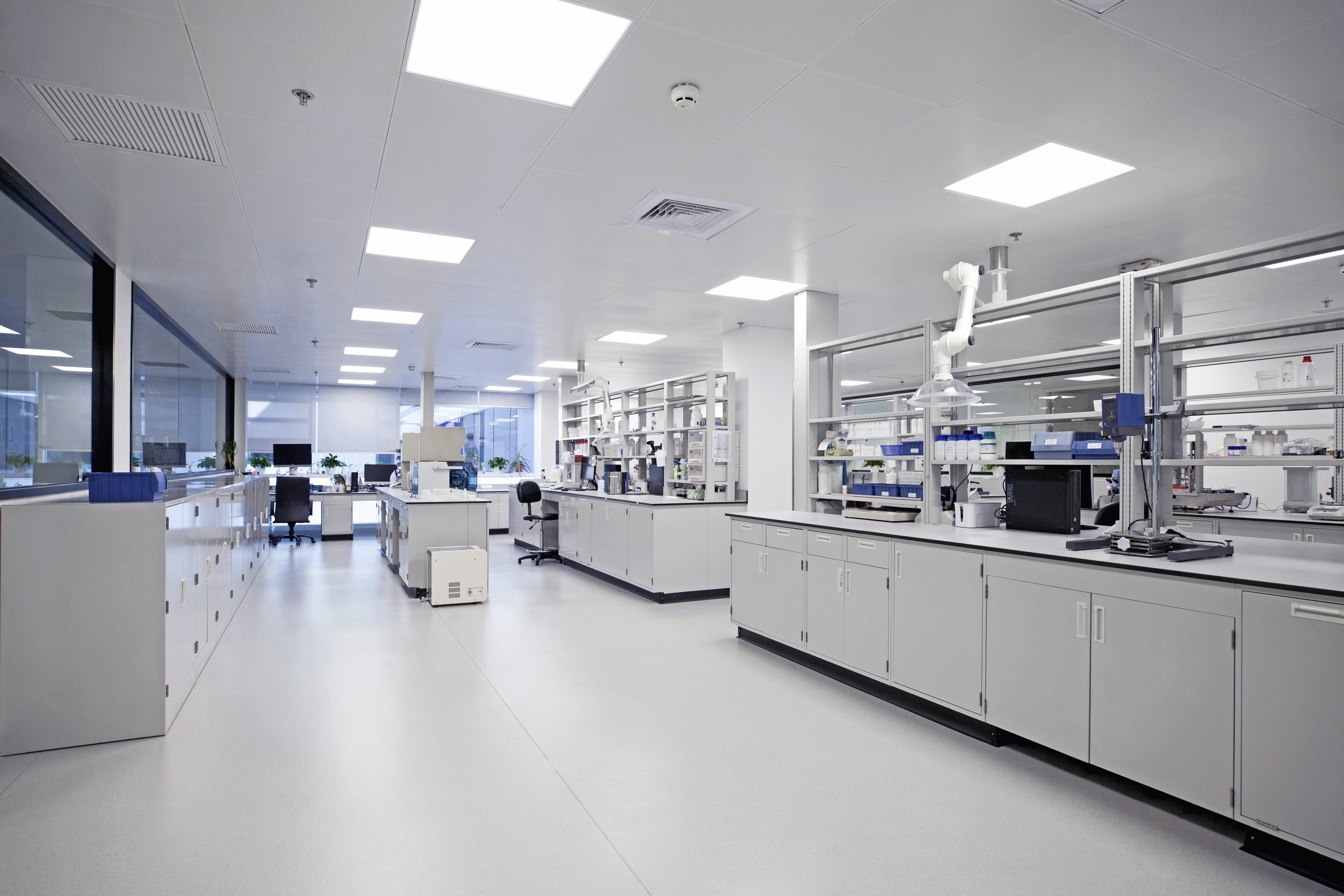Redesigning the post-pandemic life sciences workplace
Assessing the disruptive trends resulting from the pandemic’s outbreak, we find that remote working, workplace health and safety, investing in innovation and delivering value at scale and with agility are more than ‘good strategies’ today. They are necessary differentiators. And while every other industry has used the past year to pivot, accelerate and acclimatize to these changes, the life sciences industries have definitely thought ahead and adapted faster than the rest in some ways, partly because workplace safety, security and innovation has always been at the core of these sectors. And more so because the life sciences workforce are at the heart of breakthroughs and operations steering the world through this particularly difficult time.
Given this augmented shift, it is worth looking closely into and identifying factors that can and are pushing the needle at the life sciences workplace today.
1. Maximising workplace flexibility to drive productivity
Our observational research on pharma workplaces has seen this industry veering towards activity-based workspaces coupled with choice and flexibility to enhance productivity. Of course, this depends on the specific needs of the firm.
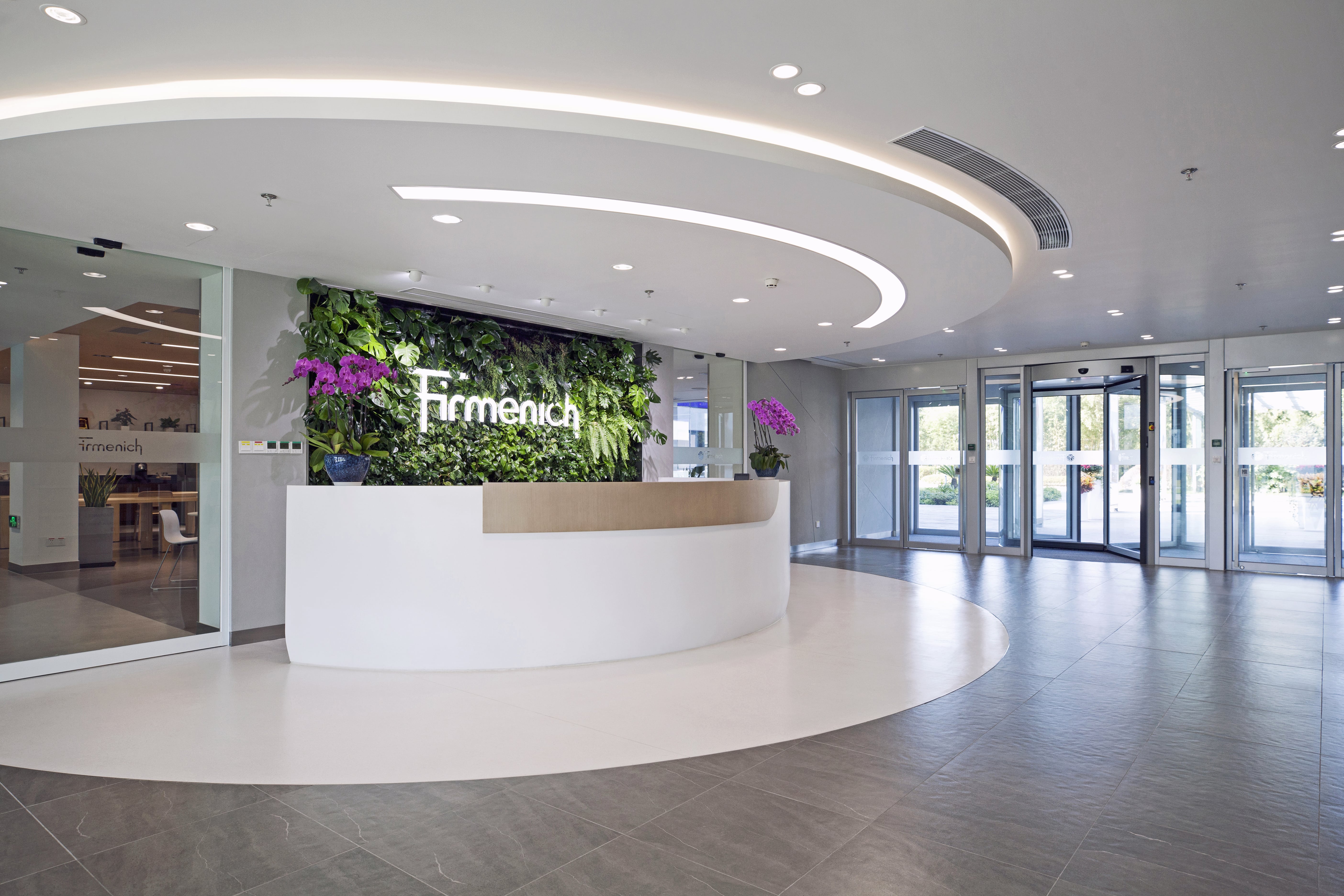
Firmenich, Shanghai
For instance, in the case of Firmenich, one of the largest companies in the field of aromatics, we developed a workspace comprising collaboration-oriented meeting spaces and focused lab areas, aside from multi-functional spaces for other activities like training and user research. All this was done while also addressing safety, hygiene and air circulation management.
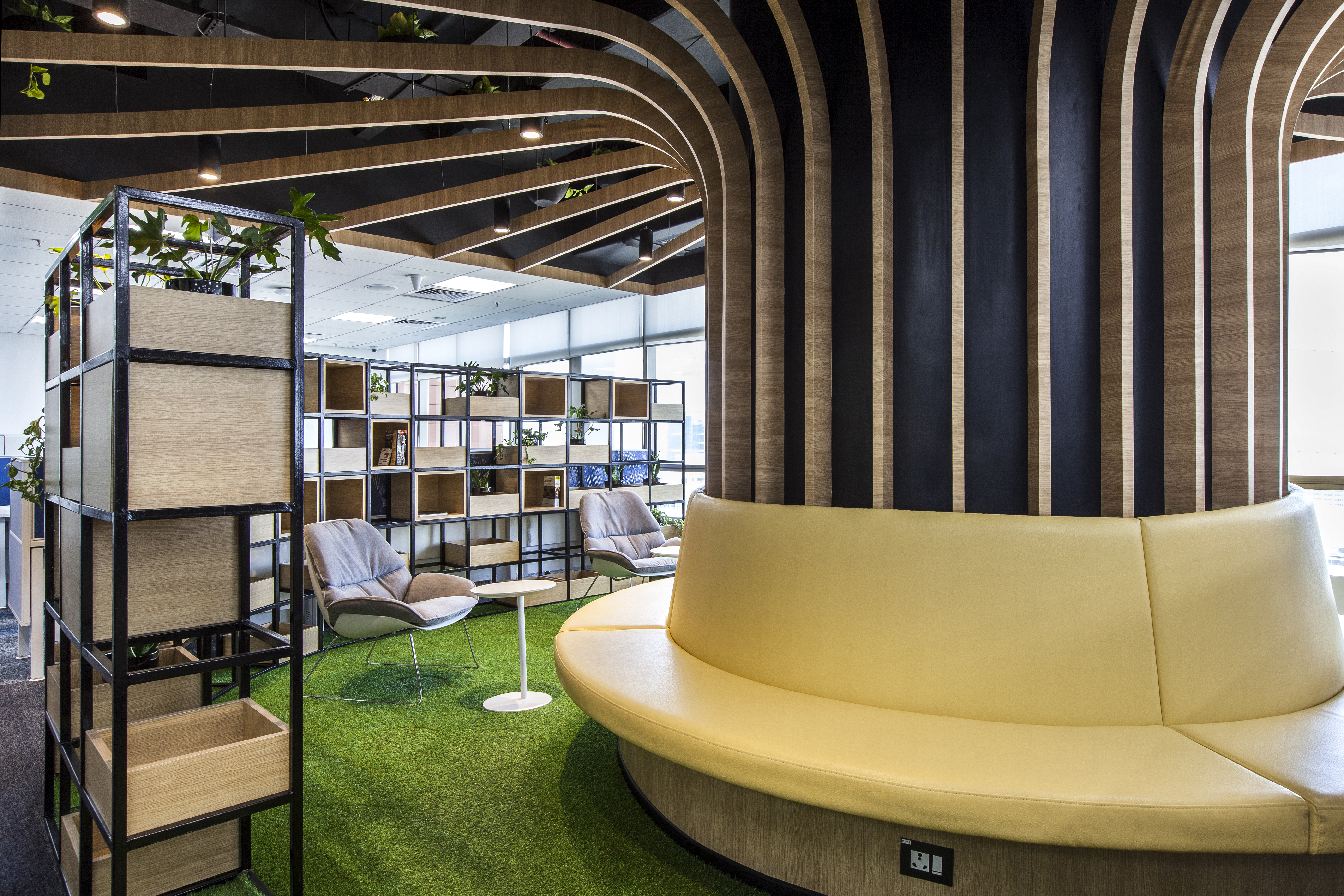
Confidential client, Bangalore
The other important aspect is the availability of and accessibility to improved facilities and technology that cater to the needs of the various departments. This was a key consideration for an American multinational healthcare company we partnered with when they were building their office in Bangalore. The leadership was clear that the space should cater to the needs of their different departments. Our design team worked with the employees to understand their workstyles and incorporated their feedback to develop a 28,000 sq ft workplace that caters to all age groups, functions, and work activities. Open offices and collaboration spaces aside, we created multi-purpose, semi-enclosed spaces that can be converted into meeting rooms with noise-diffusing devices, writing walls, and rolling scrum boards. Technology was built into all workspaces to include smart collaborative whiteboards and presentation screens that connect to multiple smart devices.
2. Working out a workplace model that works best for everyone
Typically, the larger staff strength in any mature pharma company is in sales. With the pandemic and the rapid shift in working models, they are also, like every other industry, having to experiment and grapple with agile working styles. But even without the pandemic, sales teams are usually more mobile than the R&D teams. And in the post-pandemic era, a hybrid model seems to be gaining favour from within the industry. In this scenario, it is important to understand what works best for different teams and how to utilize spaces based on those insights.
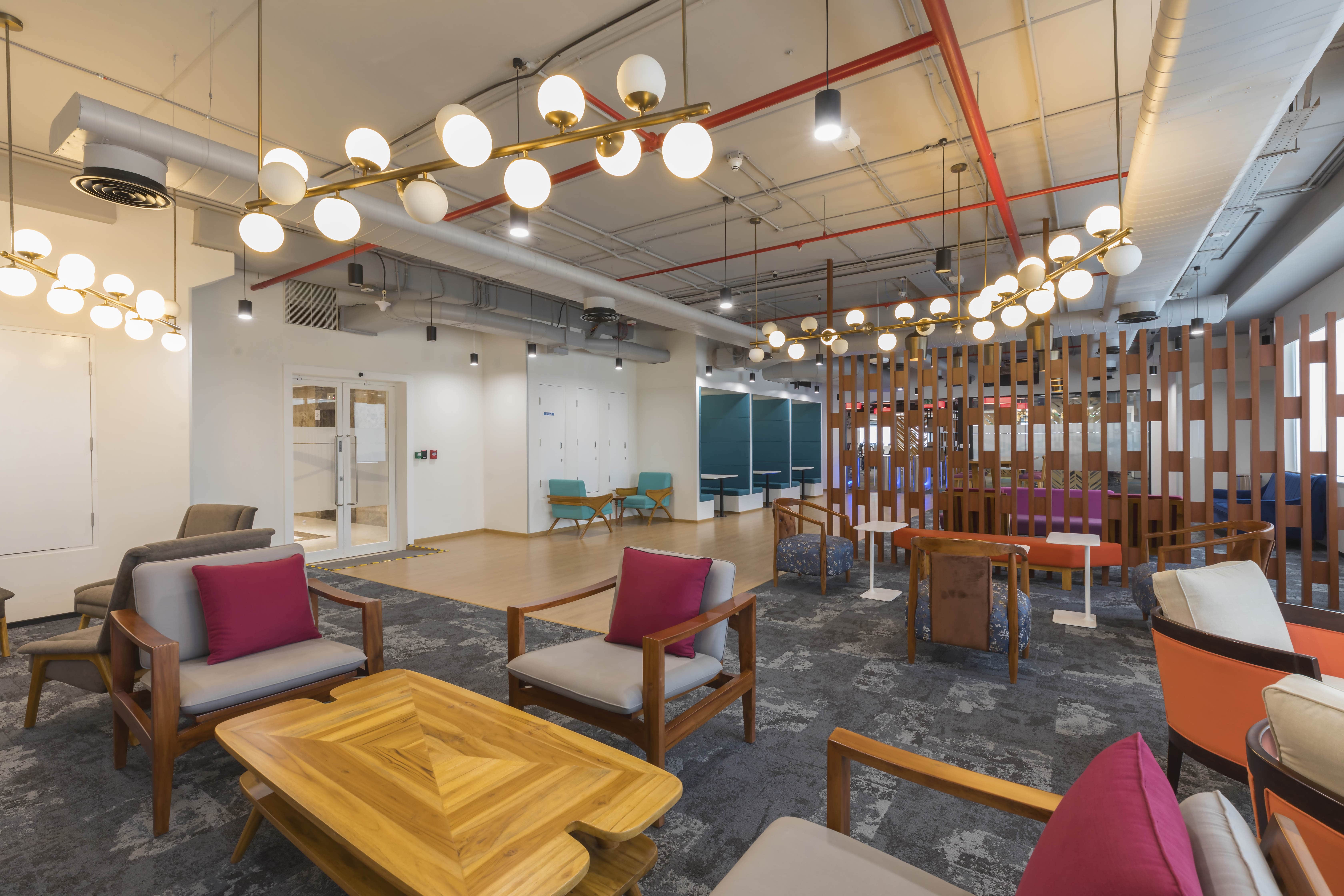
Confidential client, Bangalore
One of our confidential pharma clients had this in mind as they made the decision to move to a completely agile workplace in Bangalore. We approached the design of their space with the coworking experience in mind. By using a mix of lounge type seating and tables, desks and bar seating of an informal nature, we were able to create spaces that were flexible enough to offer their employees the choice of multiple work environments be it for focused work or collaboration.
3. Building a positive brand presence to attract new talent
Employees spend a major part of their lifetimes in office spaces collaborating and creating important solutions. It is therefore natural that the philosophy of making work an enjoyable experience through workspaces is gaining momentum. While swanky offices and unnecessary-but-cool-toys may not always be possible, simple solutions that help employees unwind, recharge or gain an alternate perspective go a longer way in influencing positivity at the workplace. For instance, meditation rooms and mothers rooms can help employees experience the comfort of home at the workplace as well, and this is particularly important on days that your people would prefer to work from the office along with their team.
In Piramal Mumbai’s office space, we not only incorporated biophilic elements, but also brought it into the design vocabulary of the space. Green walled lobbies, potted and movable planter boxes recreate an Indian courtyard within the office, bringing a sense of comfort while ensuring improved air quality as well. We also used geometric designs inspired by leaves and replicated in the floors and ceilings to create cohesive spaces. The focus on well-being and comfort is also seen in the decision to have a children’s nursery to take the stress of childcare away from parents as they work. This is in line with their core values to promote well-being, creativity and productivity.
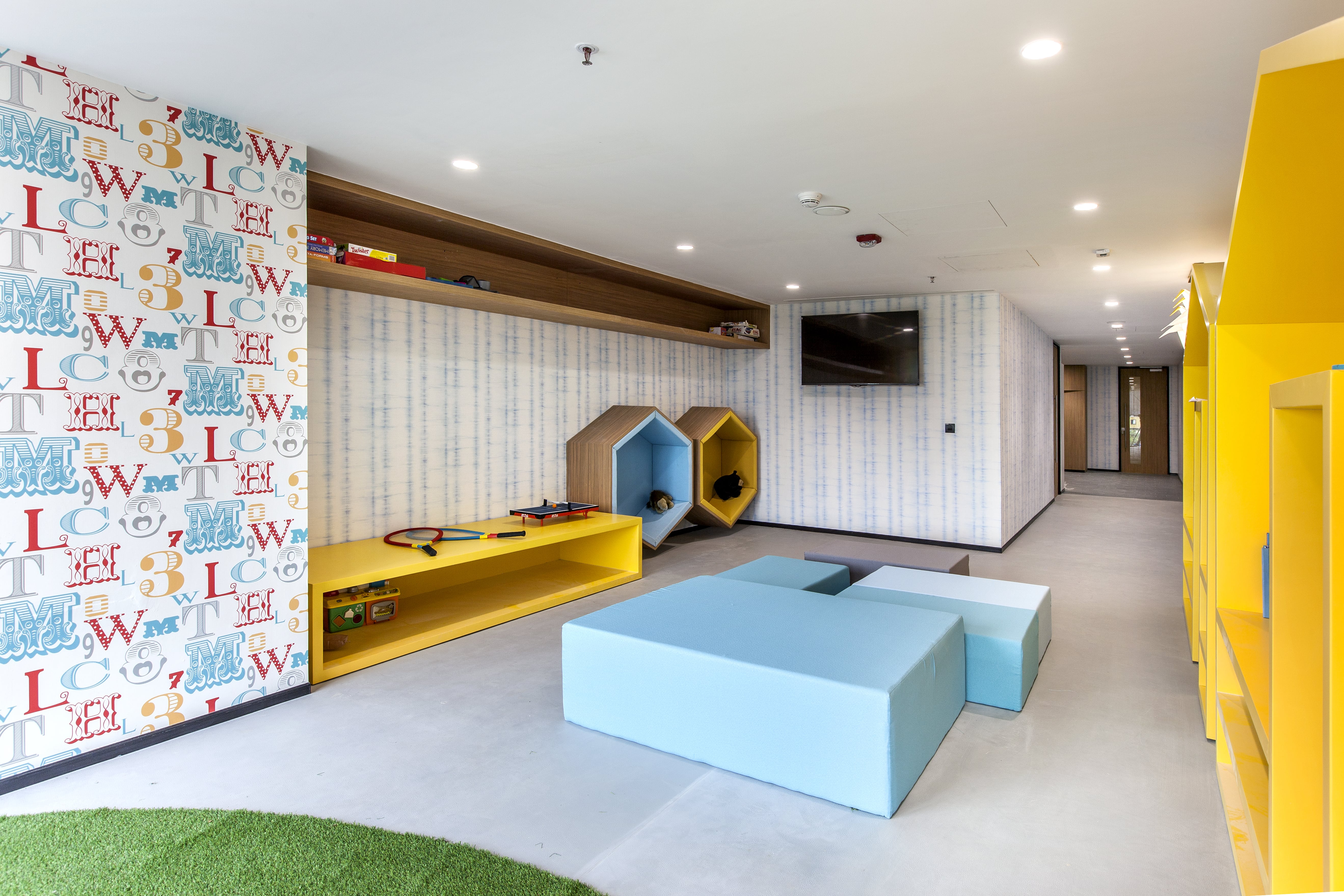
Piramal, Mumbai
At Space Matrix, we focus on keeping the users of the workplace at the centre of our design & build approach. This helps you maximise space efficiency along with improving employee engagement and satisfaction.
To date, Space Matrix has completed more than 120 projects in the life sciences industry totalling over 4 million sq ft, impacting 40,000 employees in 20 cities around the world. We’ve worked with dynamic firms like Pfizer, AstraZeneca, GlaxoSmithKline, Hillrom, Varian, Reckitt Benckiser, Abbvie and more to push the frontiers of workplace design and employee engagement. We can talk about your firm’s workplace strategy, too.

